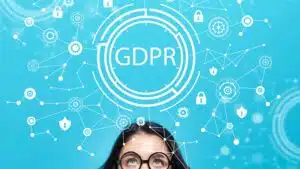Millions of people use the internet to do banking transactions every day. While it’s a convenient and fast way to conduct business, it’s important to be aware of the risks and take precautions to protect your information. Here are six best practices for safe online banking. Follow them, and you can rest assured that your money is in good hands.

Photo by Blake Wizs | Unsplash
1. Use a strong password that is unique to your bank account.
Never use the same password for multiple sites. Hackers commonly rely on people reusing passwords and taking advantage of less sensitive sites to learn your password. To avoid this, always use a different password for each site.
- Your passwords should be at least 12 characters long or more.
- Your passwords should include letters, numbers, and special characters.
- Your password must not have birthdays.
- Always change it periodically, every 3–6 months.
2. Keep your devices up to date.
Just as you expect your bank to keep their security up-to-date, you need to make sure the software on your devices is updated, such as the antivirus, firewall, and security software on your computer. Also, make sure your bank’s app is updated on your mobile phone.
3. Always avoid clicking on links or opening attachments in email messages from unknown sources.
Have you ever received an email from what seemed like a legitimate sender, but the link inside led to a malicious website? If so, then you know how easy it is for cybercriminals to trick people into clicking on links that can infect their devices with malware or steal their personal information.
Related post: Email Security in 2023: The Importance of Encryption and Authentication
4. On a regular basis, check your account statement for unauthorized charges.
Unauthorized credit card charges can be scary and a hassle, but you might be able to stop possible stealing if you find and report them as soon as you notice them. To spot unauthorized charges, you must pay close attention to every transaction in your bank account, both big and small. You can quickly find out about unauthorized transactions if you keep an eye on your transactions online all month instead of waiting for your monthly billing statement.
5. Report any suspicious activity to your bank, preferably as early as possible.
Banking schemes are an unfortunate fact of life these days. At some point, when reviewing your monthly account statement or online activity, you may notice a purchase you didn’t make. What should you do next? If you discover a fake charge, you should contact the bank immediately and speak to its fraud department. The sooner you contact your bank, the quicker you will get your money back, and if the transaction is unauthorized, the bank can stop any further transactions.
6. Utilize Banking Notifications
Most banks offer their customers text and email alerts for various purposes. It ranges from getting a notification when there is a transaction over a certain amount to when your balance inclines below a certain amount and more. Use these notifications to alert you every time your account is accessed. Always have your bank’s help numbers on hand in case you see a transaction you didn’t make and need to stop it right away.
Thank you for reading! We hope that our tips have helped you stay safe during your online banking transactions. Please comment below with any questions or feedback, and be sure to share this post with your friends and family. Stay safe out there!








